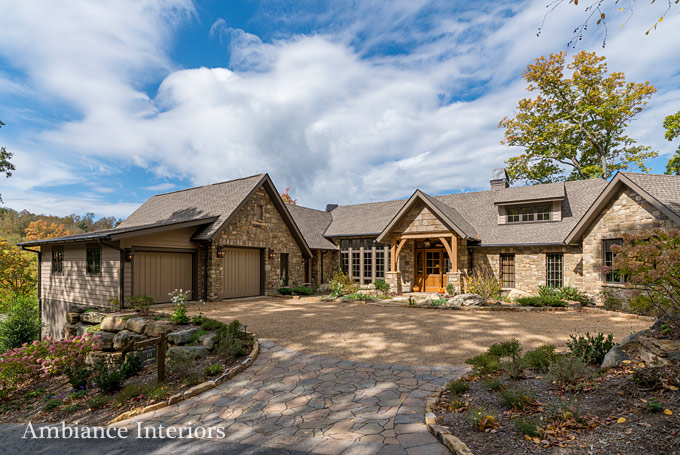As first seen in NC Design Online.
Homeowners often think of window treatments as pretty accents that add a finishing touch to a living space. But, as Asheville interior designer Kathryn Long of Ambiance Interiors can attest to, they are actually a significant design element that requires thought, planning and preparation to get right. Kathryn is known for her beautiful and well appointed designs, as well as her impeccable attention to detail. She is passionate about finding the right window treatments for the right space, and North Carolina Design caught up with her to learn more about how she does it.
 Images Courtesy of Ambiance Interiors ©
Images Courtesy of Ambiance Interiors ©
Kathryn became an expert at window treatments by necessity. “Usually seamstresses come to the worksite to assess the windows, but for years my seamstress never left the sewing room,” she says. “So I had to learn about fit, scale and proportion. I had to become very familiar with overlap, return and fullness. Over the years, I developed such an appreciation for well made window treatments and everything they add to a home.”
In fact, window treatments perform a long list of important functions in a living space. “They provide light control and privacy,” Kathryn notes. “They protect furniture and rugs. They add acoustics and help set a mood. They cover the intimidating ‘black holes’ that bare windows become at night. And they make a space warmer, both literally and emotionally.”
In spite of their benefits, Kathryn has found that homeowners don’t always embrace window treatments initially. “People fear they’ll lose their view and their light,” she explains. “But properly designed window treatments will frame the view and control the light, so that there’s ample illumination when needed, but no glare at the wrong time of day.
“This home is a prime example of that principle. The great room has a fairly western view, so at 5:00 you had to get out your sunglasses. We used custom motorized Roman shades in a semi sheer fabric. The shades block out the afternoon glare, but they don’t block the view completely. We used Roman shades in the same style in the dining room, as it also has a fantastic view.
“The sun was pouring in through the large windows in the breakfast room. My clients were reluctant to listen when I suggested window treatments, but in the end it really came down to a question of practicality. We used semi-sheer cellular honeycomb shades. They work well to control light, the stack up when they’re raised is really tiny, and they offer thermal protection. In the master bath the concern was privacy, so we used a more opaque shade on a wooden rod.”
Beyond function, Kathryn ensured that the window treatments fit in seamlessly with the home’s overall design. “This was a charming mountain home with fabulous architectural details,” she notes. ”The clients wanted it to be an inviting space, with nothing breakable or unapproachable. Somewhere you could put your feet up and feel truly comfortable.”
Kathryn created an elegant and richly detailed space that was also inviting and unpretentious. She used wood and natural stone to bring the outdoors in, antique furniture pieces to add traditional warmth, and rustic arts and crafts elements to provide a touch of simple mountain charm. For window treatments, Kathryn chose linen and cotton for a natural softness that would perfectly complement a mountain home.
“Window treatments are not designed in a vacuum,” Kathryn observes. “They have to relate to everything else in the space, and be so well designed that they’re part of the interior. When they’re done right, they should disappear into the background. And I think we achieved that here.”
 Platt Architecture, PA, Brevard, NC
Platt Architecture, PA, Brevard, NC















